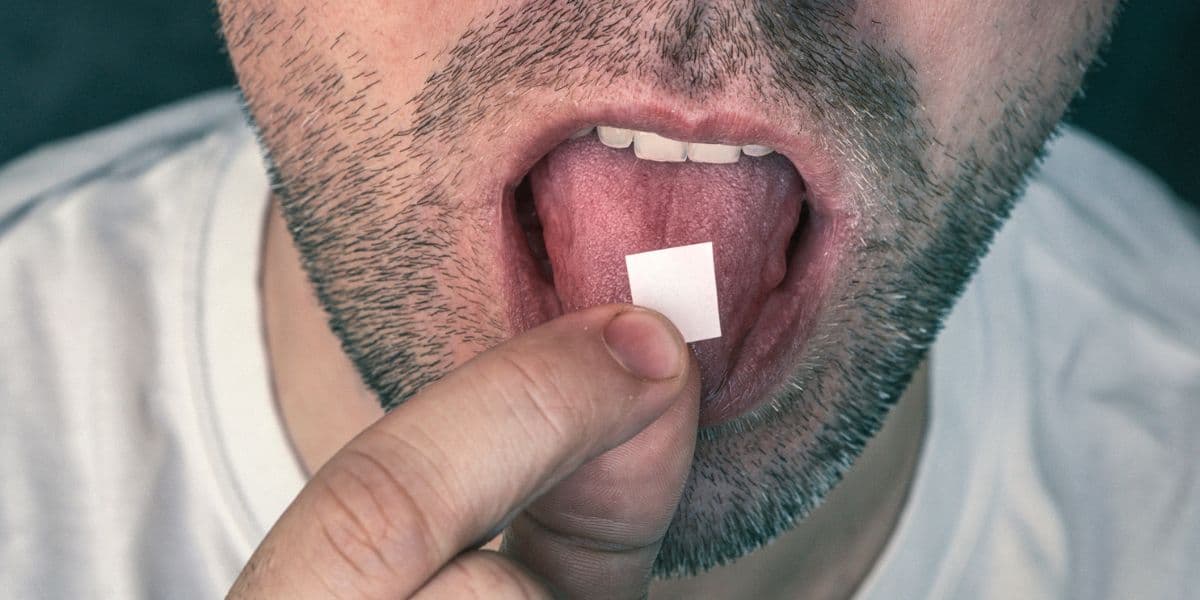Is LSD Addictive?


Lysergic acid diethylamide (LSD) is a potent hallucinogenic substance known for its intense effects on the mind. Unlike substances such as opioids or alcohol, experts do not classify LSD as physically addictive.
However, it can lead to psychological dependence. This psychological hold can create serious mental health risks. It is important to understand the effects and dangers of LSD.
LSD uses range from recreational experimentation to recent investigations into potential therapeutic applications. Despite the different uses, the unpredictable nature of LSD’s effects remains a significant concern. Users may experience changes in how they see things. For some, these experiences can be enlightening, while for other people, they can be profoundly distressing.
LSD can cause long-term psychological problems. These include ongoing psychosis and hallucinogen persisting perception disorder (HPPD). These mental issues show the importance of being aware of LSD’s risks.
Some people support the drug for its ability to expand consciousness. However, the risks can cause serious mental health problems.
What Is LSD?
LSD is short for lysergic acid diethylamide, a hallucinogenic drug that causes significant changes in perception, emotion, and sensory experiences. You commonly find it in small squares of blotter paper, but it can also be produced as tablets, capsules, or liquid.
Understanding LSD’s key characteristics is vital for recognizing its influence on the brain and behavior. These facts highlight why LSD is a substance of concern for both users and health professionals.
The National Institute on Drug Abuse (NIDA) says that LSD works by affecting serotonin receptors in the brain. This interaction changes moods, perceptions, and thinking. People often use LSD to experience a “trip,” an altered state marked by sensory and emotional changes. However, this state can quickly turn into a “bad trip,” marked by anxiety, paranoia, and intense visual disturbances.

Effects of LSD
LSD’s effects vary based on several factors, including dose, environment, and a person’s sensitivity. The drug typically begins to act within 30 to 90 minutes after ingestion, and its effects can persist for up to 12 hours.
LSD Short-Term Effects
The short-term effects of LSD are unpredictable and can fluctuate between pleasurable and disturbing experiences. These immediate effects come from the drug’s ability to alter brain function significantly.
- Visual disturbances
- Hallucinatory effects
- Drastic emotional mood swings
- Fear
- Confusion
- Increased heart rate
- Sweating
- Chills
Long-Term Risks of LSD
Chronic use of LSD can lead to persistent mental health changes. These long-term risks demonstrate the potentially severe consequences of repeated LSD exposure.
- Persistent psychosis: Long-lasting episodes of paranoia or visual disturbances
- Hallucinogen persisting perception disorder (HPPD): Recurring hallucinations or visual disturbances even after the drug has worn off
LSD use can result in different experiences for each user. Some users share positive experiences, but others face serious psychological distress. This distress can lead to harmful behaviors and long-lasting mental health problems. High doses of LSD particularly elevate the risk of a “bad trip,” contributing to persistent anxiety and fear.
What Is Hallucinogen Persisting Perception Disorder (HPPD)?
Hallucinogen persisting perception disorder (HPPD) is a condition characterized by recurring visual disturbances long after the immediate effects of LSD have subsided. These disturbances can last for weeks, months, or even years. HPPD represents a serious, though rare, long-term effect of hallucinogen use, significantly impacting daily life.
Symptoms of HPPD
It is important to recognize the symptoms of HPPD. This disorder causes ongoing sensory disruptions. These disruptions can lead to distress and problems with daily activities.
HPPD is distinct from the typical “bad trip” associated with LSD use. HPPD is a lasting perception disorder listed in the Diagnostic and Statistical Manual of Mental Disorders (DSM). It can cause serious distress and affect a person’s daily life.
Long-Term Effects of LSD
While LSD does not lead to physical addiction, its use can result in psychological dependence. People may find themselves repeatedly using the drug to chase the intense sensory experiences it causes. Over time, users can develop a tolerance to LSD, requiring higher doses to achieve the desired effects.
The long-term effects of LSD can lead to significant changes in mental health. These changes may impact a person’s ability to function normally. These long-term effects include:
- Psychological addiction
- Psychosis
- Long-term mental health issues
- Recurring hallucinations
- Difficulty in daily tasks, social interactions
The NIDA cautions that long-term LSD misuse can lead to severe mental health complications. Prolonged use can disrupt normal brain function, resulting in social, occupational, or interpersonal challenges. Additionally, the risk of developing a substance use disorder is heightened with continued LSD use and psychological dependency.

LSD Withdrawal Symptoms
LSD is not associated with traditional withdrawal symptoms like those observed with alcohol or opioid use. However, psychological withdrawal symptoms can manifest, particularly in people who have become dependent on the drug’s hallucinatory effects.
Identifying potential psychological withdrawal symptoms is crucial for providing appropriate care to those recovering from LSD use. LSD withdrawal symptoms include:
- Depression
- Hopelessness
- Anxiety
- Panic disorder
- Drug cravings
- Irritability
- Restlessness
These symptoms can range in severity and may complicate the recovery process. Given that LSD dependence is mainly psychological, effective treatment often requires a focus on mental health support rather than physical detox.
Treatment for LSD Abuse at White Oak Recovery Center
White Oak Recovery Center (WORC) offers a comprehensive approach to treating LSD abuse and co-occurring mental health disorders. WORC’s patient-focused care recognizes the unique effects of LSD. It highlights mental health support as a key part of recovery.
Treatment includes a thorough evaluation of the person’s mental health history, environmental factors, and specific experiences with LSD. WORC provides medical detox and dual diagnosis treatment along with medication-assisted treatment to treat substance use disorder and its accompanying mental health issues.
White Oak Recovery Center uses evidence-based treatments and therapies, such as cognitive-behavioral therapy (CBT). WORC also collaborates with you to create a tailored treatment plan to fit your unique needs for sobriety.
WORC’s inpatient treatment center is a caring place. Here, you can think about your addiction and start healing. You will learn how to live a happy life based on recovery. Our approach is designed to help you rebuild your life and acquire the skills needed for life-long recovery.
Contact WORC. Our caring treatment specialists are ready to help you begin your journey to sobriety and thrive in recovery.

Am I covered for addiction treatment?
Your insurance may cover treatment. Call now for an entirely free and confidential assessment. Recovery starts with a phone call.

- “LSD Fast Facts.” National Drug Intelligence Center, Apr. 2024.
- Baquiran, Maximo, et al., “Lysergic Acid Diethylamide Toxicity.” StatPearls: National Library of Medicine, Dec. 2023.
- “Psychedelic and Dissociative Drugs.” National Institute on Drug Abuse, Apr. 2024.
- Das, Saibal, et al., “Lysergic Acid Diethylamide: A Drug of ‘Use’?” Therapeutic Advances in Psychopharmacology, Jun. 2016.
- Kopra, Emma I., et al., “Adverse Experiences Resulting in Emergency Medical Treatment Seeking Following the Use of Lysergic Acid Diethylamide (LSD).” J Psychopharmacol, Aug. 2022.
- “Facing Addiction in America: The Surgeon General’s Report on Alcohol, Drugs, and Health.” Substance abuse and Mental Health Services Administration (US), Nov. 2016.
Medical Disclaimer:







